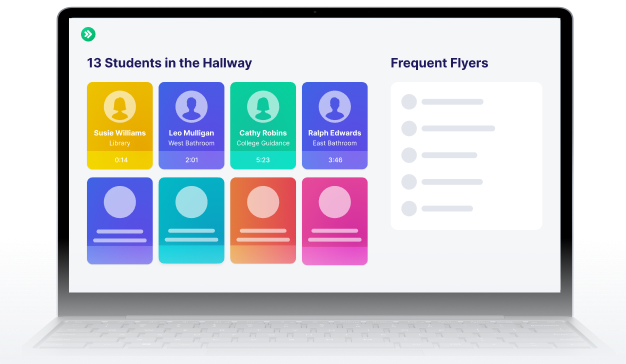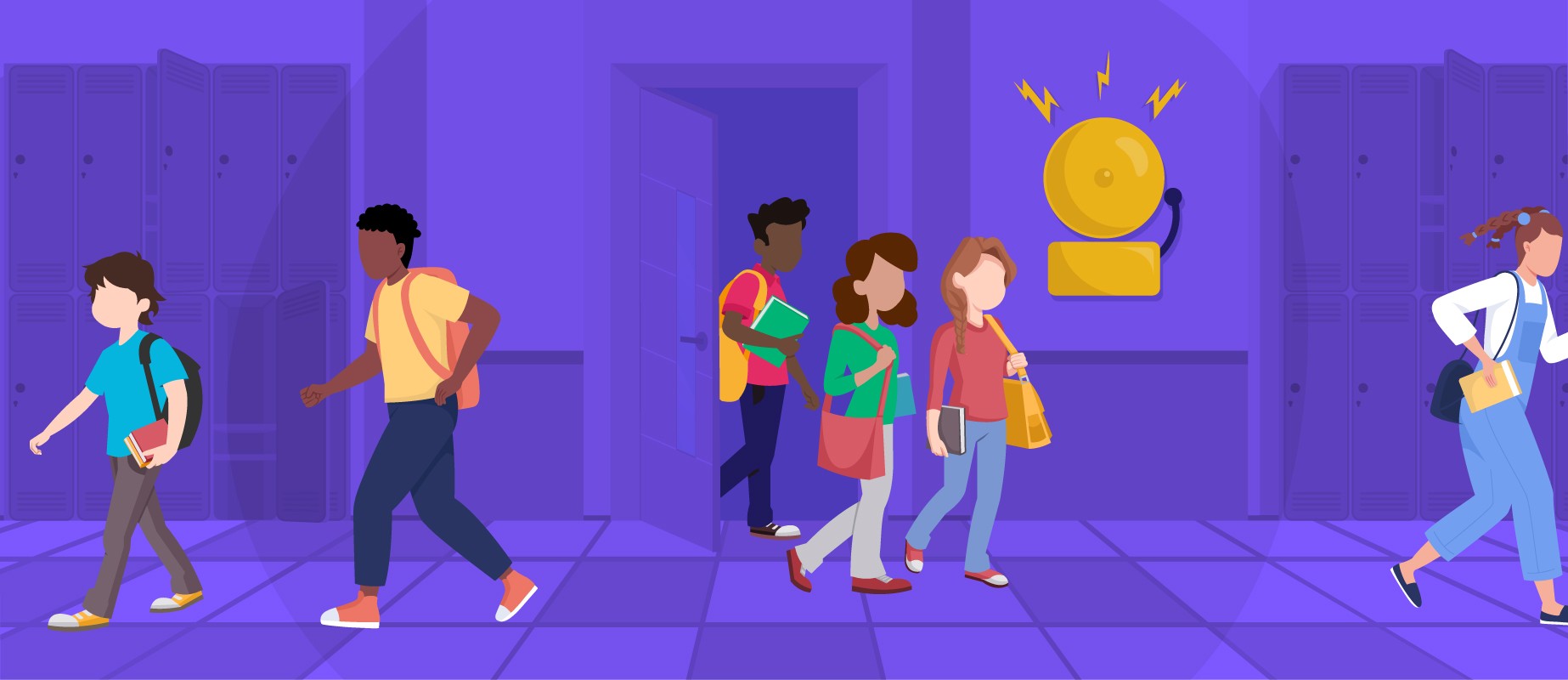In the News: Enhancing Safety in Schools Across Minnesota
Read the Story
SmartPass Co-Founders Listed on Forbes 30 Under 30
Read the Story

Lee Moskowitz
.avif)

Students cutting class is not a new issue for schools but, like everything in education, things look a lot different now! The factors that influence the behavior, the impact, and the strategies to maximize instructional time all shift with technology. With more students having smartphones, students can coordinate meetups with friends easier than ever. Vaping is a tough issue for schools and a particularly dangerous one for students. Even age-old situations like vandalism or bullying require updated approaches.
Attendance data shows a rise in chronic absenteeism. In a study with the Chicago Public School system, the number of teachers reporting that their students were engaged in class dropped by 10% between pre-pandemic years and 2023. Classroom engagement, school safety, and social and behavioral outcomes are all impacted by student movement. Managing student movement to ensure there are not too many students out of class is an important part of ensuring a safe and productive learning environment for the whole school community.
Excessive student movement can have negative impacts across the learning process. According to the National Association of State Boards of Education, higher student engagement leads to better learning and behavioral outcomes throughout schooling and even into post-secondary. When students leave the classroom, it can disrupt the flow of the lesson, causing missed instruction time for them and their classmates. Teachers are already juggling a lot in each class period, so these disruptions add up. Plus, maintaining the record of who has been out of class often, when, and why is important for possible data-led discussions if students are struggling with an issue in the future, so that record keeping takes up more of the teacher’s time and energy.
Teachers also have to keep track of who is out of the classroom in case of emergencies, which can be difficult when students leave frequently or don’t follow school procedures. Student interactions can lead to unsafe social situations when there is less supervision, so too many students in the hallway and bathroom can be risky. When asked by the National Center for Education Statistics (NCES), 48% of schools surveyed reported that “rowdiness outside of the classroom” had increased.
Cutting class can stem from a wide range of things. Some students may be bored with a subject or just not want to be in the room. Students are kids who can explore and test boundaries. For some students, that means making decisions that lead to missing out on class time. It’s an understood part of student behavior, but it still has negative consequences for their education and the school learning environment.
If a student has excessive class absences, there are also more serious causes to consider. Maybe they’re struggling with the class’s content or they’re dealing with mental health difficulties. They may be wandering the halls instead of being where they are supposed to be, leading to fights and other behavior issues. Students could be meeting up to vape, which carries social and health-based consequences.
Student engagement in the classroom matters. It’s also thoroughly linked to educational outcomes and the overall health of the school community and student experience. Teachers can set up their classrooms for better engagement by intentionally including students in classroom policies and behavior management from the beginning of the year, collaborating to set and enforce expectations. Quality instruction is related to engagement, as well.
When there are behavior issues that pop up, the impact can be frustratingly circular as disciplinary measures can lead to missed classroom time, too. Thoughtful mitigation before it happens, solid relationships with students, and consistent and intentional consequences using evidence-based methods can help prevent this from becoming a cycle.
It’s also important to not over-correct. When nothing seems to be working, schools may resort to extremely limited pass systems or even shutting down common areas like bathrooms. This will have negative impacts as well, though. Students need to feel safe in their ability to access what they need to and they deserve autonomy, whenever it’s safe to give it. The key is to have a system that is flexible and effective and put in place so that it can support and guide students to keep them safe and cared for in the best learning environment possible.
Involving students in a genuine and intentional conversation about their behavior, school expectations, and the goal of fostering a positive school culture, can give them autonomy and accountability. Especially as students age into the upper grades, the effectiveness of this grows. It gives students developmentally appropriate input and decision-making opportunities while maintaining an easy-to-understand system for them to do it in. The clarity of what hall passes are available keeps things simple and follow-up data to monitor when and how they’re using them is helpful for the students, teachers, and family members whenever issues may pop up.
Peer-to-peer interactions and accountability can help when the right systems and expectations are in place. The community working together to include students in the process makes it easier to handle any compliance issues or consequences. Clear communication, consistent enforcement, and a feeling of ownership of their role help students understand and feel heard.
That understanding and consistency give students more security in how they navigate their decision-making and help them to stay engaged throughout the school day. They have a shared set of expectations to reference if they’re in a situation where other students suggest something that’s against school policy, which helps them handle peer pressure more easily. They are able to feel safer about moving around throughout the day if they do need to, since they understand the expectations for other students’ behavior, as well.
If a situation that doesn’t meet school policies or expectations does happen, the students and adults are able to count on reliable data to help sort through what happened and to help strategize an effective way forward.
There are strategies that help address student behavior issues that contribute to excessive hallway traffic and students missing class. They should be school-wide, thoughtful, positive-first, account for classroom and individual needs, and aligned with other school behavior strategies and policies. School culture and a team to lead can help make this implementation more effective.
The need for a big picture approach and community-wide involvement means that teachers can’t be the only ones in the mix. Administrators who are involved in the process, supportive, and focused on building intentional relationships with students, teachers, and families will have a big impact. Early intervention can apply to students or groups of students and will look different for each student and situation, but it’s important.
Counselors can help in creating a culturally responsive and evidence-based plan. Once the plan is in motion, their support for students and classrooms to set up for success and effectively intervene when needed is essential. Students miss class for a wide range of reasons, and student-centric counseling can make sure that any behavior interventions or consequences are thoughtful and appropriate. This can be particularly important when a student has faced or is facing trauma.
It’s essential to remember that behavior needs to be taught, retaught, and reviewed. Students shouldn’t be expected to hear the policies a couple of times and have the issue go away. Overall, this all adds up to a community-led plan that’s data-driven and in place before it’s needed. That can feel like a big undertaken for schools already short on time and resources, but there are strategies and tools that can make it much easier.
It’s possible to boost student accountability and improve hallway behavior through digital hall passes like SmartPass. Traditional school hallway management systems rely on sign-out sheets and paper passes. This is ineffective, time-consuming, and means that coordination between staff and classrooms is very limited. It’s also difficult to track over time and there is no easy way to document any need to adjust policies or procedures for students with special circumstances.
SmartPass takes the time and mental load off of teachers by providing a unified hall pass system that keeps a digital record. Special situations are easy to plan and implement for students. Room limits for destinations, hallway max capacities, and even encounter prevention between students can address possible behavior and social issues before they happen.
Students can request a pass from a teacher on their own device or verbally, and a teacher can quickly approve it or not without interrupting the flow of instruction. If there are limits or restrictions, teachers can see them right on the screen and easily adjust the pass or have the student wait. The data from which students are out of class, when, and how often is invaluable for insights into struggles students may be facing, addressing underlying causes of behavior incidents like vaping or vandalism, or identifying a dangerous bullying situation.
The consistency and pre-set policies allow students to have a voice and daily input into their access to hall passes, as well. That collaborative approach and autonomy are important for student accountability and adaptability to student’s individual needs. All of this leads to more time and effort on the learning parts of the school day and a better and safer experience for everyone in the school community.
Too many students being out of class creates safety issues, adds to teacher and school staff workload, and impacts student learning experience and outcomes. It’s a common and long-running problem schools work hard to address, but it can be tough. Taking proactive steps and building the policies and systems that can bring support and impact makes a big difference!
SmartPass’s features and data-driven results make those steps easier and solve many of the tricky issues schools struggle to find the resources and time to address alone. The efficiency, effectiveness, and ease of use are invaluable. It brings the whole school community into the process and implementation and helps ensure a safer and more productive learning environment.
Get in touch to learn more about how SmartPass can support your school’s needs for student learning and better hallway management.



